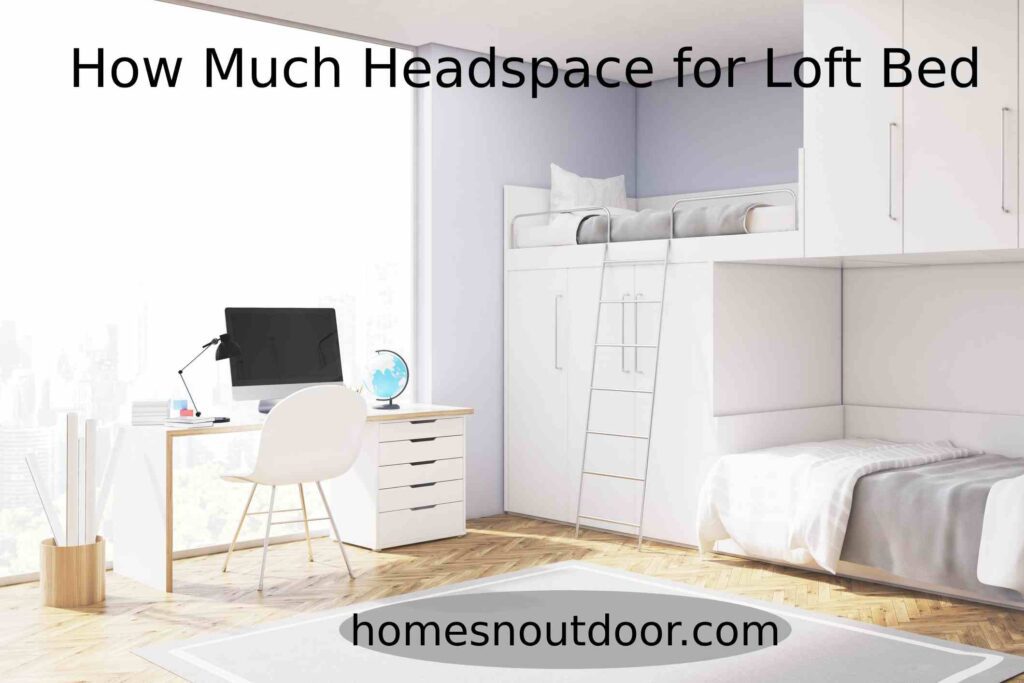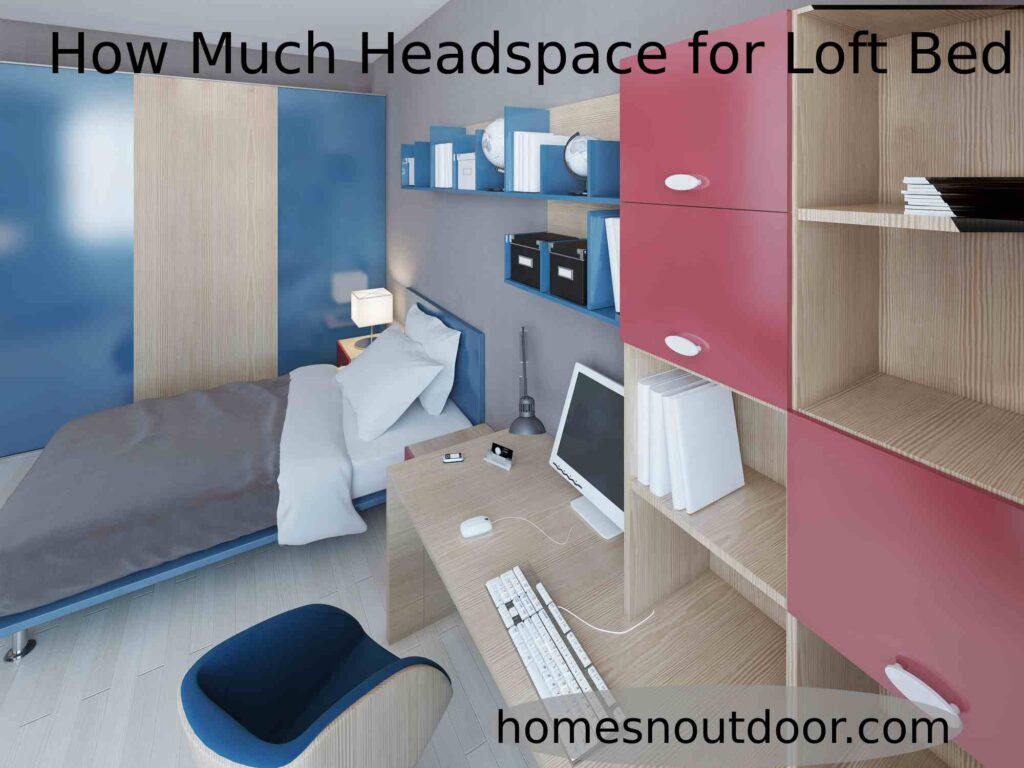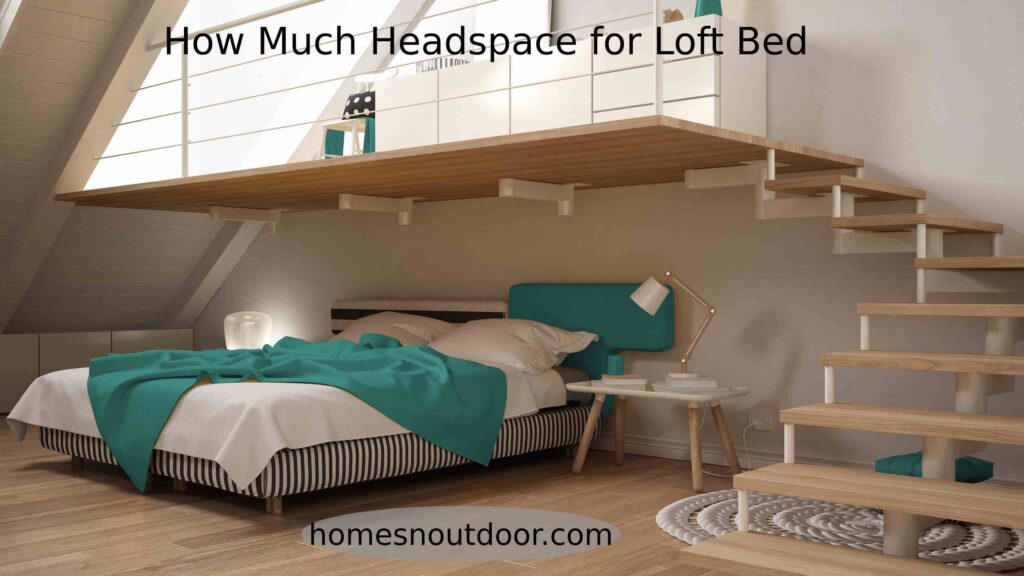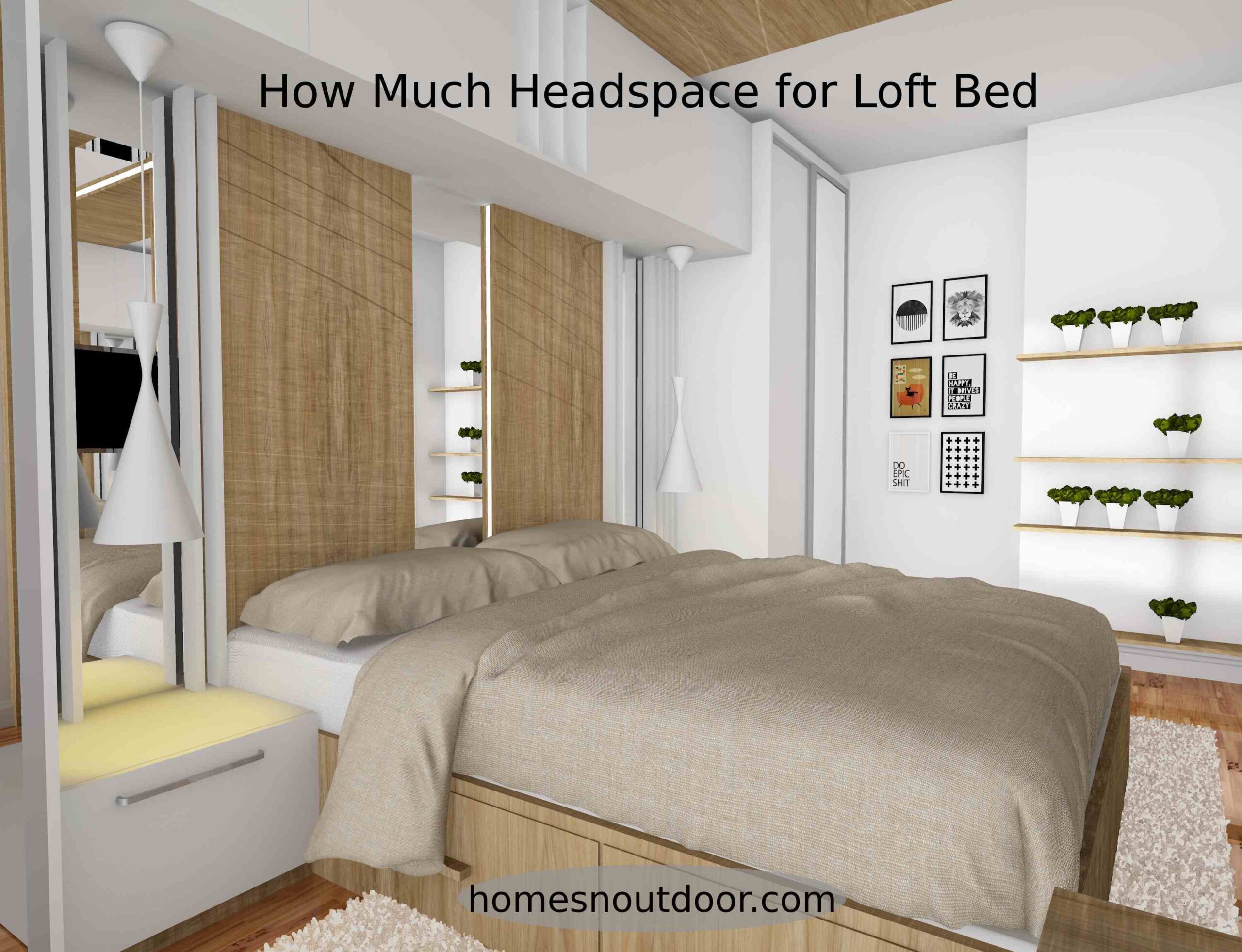Ensure at least 30 to 36 inches of headspace for a loft bed to provide adequate room for safety and comfort. This space is measured from the top of the mattress to the ceiling.
A loft bed offers a unique solution for maximizing space in smaller rooms or for creating a multifunctional area in your living space. It elevates your sleeping area, leaving room below for a variety of options such as a desk, storage, or a cozy reading nook.
The headspace, or the distance between the lofts bed and the ceiling, is crucial for comfort and ease of movement, helping to prevent bumps and injuries. Choosing the right amount of headspace ensures that the loft bed is both a practical and comfortable addition to any room. This measurement is particularly significant for adults and taller individuals to ensure the space is ergonomically sound and conducive to a good night’s sleep or a comfortable sitting position on the bed.
Introduction To Loft Bed And Space Optimization
Loft beds have emerged as a superb solution for maximizing bedroom space, especially in urban living scenarios and small spaces. These innovative bed designs are elevated, allowing for a variety of functional spaces underneath, such as workstations, lounges, or storage areas. By capitalizing on vertical space, lofts beds create additional square footage within a room.
Their growing popularity is attributed to their versatility and space-saving properties. People living in tight quarters, like studio apartments or shared rooms, find loft beds to be particularly beneficial. The design of these beds makes small living spaces feel larger and more organized.


Assessing Your Space For A Loft Bed
Before investing in a lofts bed, it’s crucial to take precise measurements of your room to ensure a comfortable fit. Start by calculating the dimensions of the available space. This includes the length and width of the room, as well as the distance between the floor and the ceiling. Ideally, at least 33 inches of headspace should be available above the lofts bed to prevent any head injuries and provide ample space for movement.
Ceiling height is a critical aspect to consider. A minimum height of 7 feet from the floor to the ceiling is typically recommended to ensure the lofts bed is both safe and comfortable. This allows for proper clearance above and below the bed, accommodating various mattress heights and user statures. It’s essential to account not only for safety but also the ease of use, which includes the ability to sit up without obstruction.
The arrangement of your room also impacts where a loft bed can be positioned. Windows, closets, and doors need to be factored into the placement to optimize the use of space. Being mindful of existing furniture and the flow of traffic through the room aids in finding the perfect spot for your new loft bed. To foster a pleasant living and sleeping environment, consider the loft bed’s proximity to lighting fixtures and air vents.
Recommended Headspace For Loft Beds
Headspace refers to the amount of vertical space between the top of a lofts bed mattress and the ceiling. It’s a crucial aspect of loft bed design, ensuring comfort, safety, and ease of movement. Ensuring adequate headspace can prevent injuries and contribute to a more restful sleep environment.
For various age groups, standard headspace guidelines help in maximizing safety and functionality. For instance, children may require less headspace compared to adults due to their smaller stature. According to safety standards, a minimum of 30 inches of headspace is often recommended to avoid any accidents or discomfort while sitting up in bed.
Custom loft bed solutions enable you to personalize headspace based on specific needs and room measurements. Customization ensures that the loft bed fits perfectly within the allotted space, providing ample headspace while maintaining the aesthetic and functional requirements of your space.


Design And Safety Tips For Loft Bed Headspace
Ensuring adequate headspace for a lofts bed directly impacts both design and safety. Functionality can be gracefully integrated to optimize the living space without sacrificing headroom. For instance, consider built-in shelving and drawers that adhere to the existing loft frame, rather than adding bulky furniture which can impinge on valuable space.
Adequate loft bed headspace is paramount for preventing injuries. Safety rails are a must, yet they must not be so tall as to reduce usable headroom. A safety feature that often gets overlooked is the distance between the loft bed and the ceiling; building codes suggest a minimum of 30 inches, but individual needs may vary based on the occupant’s height and mobility.
In environments where headspace is limited, strategies such as choosing low-profile mattresses and streamlining bedding can significantly increase comfort. Adjustable lighting installed underneath the loft can provide both ambience and functionality without encroaching on headspace. Such thoughtful details create a harmonious balance between comfort and the spatial limitations often found in lofted living areas.
Conclusion: Balancing Comfort, Safety, And Aesthetics In Loft Bed Design
Proper headspace in loft bed design is pivotal for sleep quality and overall user experience. Sufficient clearance above the bed ensures comfort during rest and reduces the risk of injury, correlating directly with the safety aspect of loft bed usage. Aesthetic appeal must also harmonize with functional considerations, as a cramped space can detract from a room’s visual charm.
Selecting the optimal headspace requires balancing these elements thoughtfully. While a generous amount of room is ideal, constraints of the living space may necessitate trade-offs. Users must evaluate the necessity of functionality versus spatial limitations. Loft bed designs are also evolving, with future trends leaning towards innovative space-saving solutions that could redefine standard headspace requirements. Careful examination of these factors will guide users to make informed decisions that cater to their unique needs.


Frequently Asked Questions Of How Much Headspace For Loft Bed
How Much Space Should A Loft Bed Have?
A loft bed should have at least 30-36 inches of space between the mattress and the ceiling for safe movement and ample headroom.
How Much Headspace Do I Need For A Bunk Bed?
Ensure at least 30 to 36 inches of headspace between the top bunk mattress and the ceiling to prevent bumps and provide ample room for movement. This space also allows for safe sitting and bed access.
Should You Be Able To Sit Up In A Loft Bed?
Yes, you should be able to sit up in a loft bed without hitting your head, ensuring comfort and safety. Choose a loft bed with adequate headroom above the mattress.
What Is The Minimum Clearance For A Bunk Bed?
The minimum clearance for a bunk bed is 30 inches between the top bunk mattress and ceiling. Ensure proper space to prevent head injuries.
Conclusion
Selecting the right headspace for your loft bed can make all the difference. Aim for comfort, safety, and functionality. Remember to measure your space accurately, consider the occupant’s needs, and adhere to recommended guidelines. Make your loft bed a haven of restful space and creative freedom.
Choose wisely for a sound sleep and a happy home!

